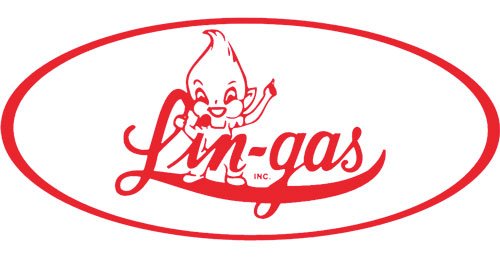If there is anything a harsher-than-normal winter teaches us, it’s that you don’t want to be caught running low on propane. An extended period of cold weather, combined with supply issues, made the winter of 2013-14 uncomfortable for some propane users, particularly when faced with premium pricing toward the end of the season, and the promise of spring’s warmer days nowhere in sight.
While it might be tempting to just breathe a sigh of relief that warmer weather is finally here, and push concerns about propane supplies (and costs) aside until fall, Lin-Gas would like for you to consider an alternative to riding out another long, cold winter season: our EZ Pay program.
EZ Pay options are just what the name suggests: you set up a contract with Lin-Gas to have propane delivered to your home at set intervals, and you pay each month. We keep track of your usage, and our auto-fill program assures you will have enough propane, even if cold weather lasts longer than anticipated. Your monthly cost can be the same each month, depending on which price protection program you select, eliminating the need to shift funds from another area of your household budget to cover any overage.
Who is eligible?
Current customers of Lin-Gas who have been with our company for one year or longer are eligible to participate in this program. We extend the EZ Pay program to customers with approved credit, and you must have a 500-gallon or larger tank. You must agree to and sign the current Lin-Gas Bulk Propane System Lease and commit to being an auto-fill customer during the term of your payment program.
Three Levels of EZ Pay
EZ Pay Silver
This is our basic level program. Lin-Gas examines your propane usage from June 1 of the previous year to May 31 of the current year, dividing the total gallons used by 11. This figure is then multiplied by a fixed rate to derive your monthly payment amount. You pay this amount each month for 11 months, and in the twelfth month of your contract, we settle up the difference. Depending on your usage for the contract year and fluctuations in price during the year, this could mean an additional cost during the twelfth month or a credit applied to your account. The program then renews for another 12-month period, with pricing based on your current usage and the established rate for the coming year. You must pay your budget amount in full by the fifteenth of each month to remain in good standing with the program.
EZ Pay Gold
The maximum price for Gold level participants will be $2.29 per gallon (cap price) for gallons delivered. This rate will expire May 30, 2015 and the maximum price will change annually. If the price of propane posted by Lin-Gas for our Net B price falls below the cap price, at the time of delivery to you, then your cost for that delivery will reflect the lower price. We will calculate your monthly payment amount based on the previous 12 months of usage and then divide that by 11 to determine your cost. The final month of the contract will be used to settle the difference, if any. To use EZ Pay Gold, you must agree to receive invoices and statements electronically by email, make all payments electronically by credit card or ACH (automatic monthly withdrawal), and pay an annual fee of $10.
EZ Pay Platinum
Participants in our EZ Pay Platinum level program benefit from a fixed rate of $1.99 per gallon, delivered, without change. Again, we calculate your monthly payment based on 12 months usage, divided by 11. The Platinum rate is not subject to pricing fluctuations. You pay the fixed amount each month, and this monthly payment will not change provided that you do not use in excess of 100% of your base period gallons. All usage above 110% will be priced at our Net B rate. Like our Gold program, participants in our Platinum program must agree to receive invoices and statements electronically by email, make all payments electronically by credit card or ACH (automatic monthly withdrawal), and pay an annual fee of $10.
Act Now to Lock in Your Rate
The time to sign up for EZ Pay is now! Calculations based on gallons used for a 12 month period should be made by June 30. We cannot guarantee the pricing set forth above after that date, and our program begins and renews on July 1 each year. More information on our EZ Pay program, including forms to download and complete, will be available online soon.
Don’t let another winter go by without establishing a budgeted amount for your propane usage. EZ Pay assures you’ll have a fixed cost each month and allows you to stay warm and comfortable, no matter how long winter may last.
If you’d like to talk further with a Lin-Gas representative about the program, we’re here to help.




